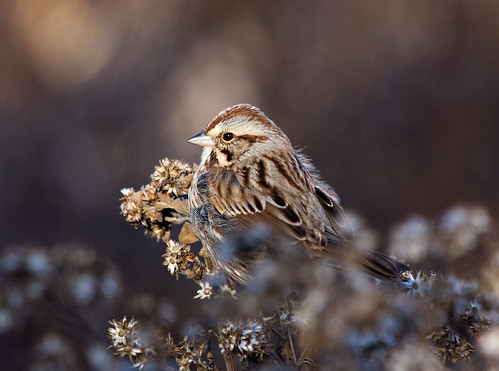 |
| Song Sparrow at the Morton Arboretum |
In 1975, when I was a brand new birder, soon after I saw my
first chickadee, my husband and I visited the Morton Arboretum in Lisle,
Illinois. That’s where I saw my very first crow and Canada Goose, which brought
my life list up to seven. Later that same year I added my lifer Brown Creeper at
the arboretum, and the next spring I saw my lifer Orchard Oriole there, so I
have very happy memories of the place.
This week I was in Aurora, Illinois, visiting relatives as I
wend my way toward Florida, and on my way out of town I couldn’t help but stop
at the Morton Arboretum for a little walk. I could only spend a couple of hours
there, but since I’m doing a Conservation Big Year, it seemed important to
highlight this place that works so hard to preserve the trees that birds need.
I walked through the beautiful elm exhibit, which seemed especially poignant
since one of my favorite birds, the Baltimore Oriole, was once so associated
with elms. This being winter, there were no orioles to be found, but hundreds
of robins and at least a dozen Cedar Waxwings provided ample evidence of the
value of fruit trees for birds. The temperature didn’t get much above 15
degrees and it was very windy, but cold isn’t a deterrent for these birds as
long as they have enough food.
The other most abundant bird at the Morton Arboretum on my
short walk was the Canada Goose. On Russ’s and my first visit there in March
1975, people in the visitor center told me how thrilled they were because a
pair of geese had nested there the previous year. They said a local rehabber
had released a permanently flightless goose in an arboretum pond where the
water stayed open all winter, and he or she managed to attract a mate. Come
spring, the flighted goose probably wanted to take off for parts unknown, but
geese are exceptionally loyal and committed to their mates, so the pair made
the best of things, raising their young at the arboretum. Because they couldn’t
migrate together, they didn’t teach their young to migrate. Year after year, they
raised more young, some moved on with their new partners while others remained
at the arboretum, having found partners willing to be non-migratory, and the
population grew. Geese happen to be one of the few bird species that graze on
and can digest grasses, and manicured lawns provide not just food but
wonderfully safe places to bring goslings, where any lurking predators are
easily seen. And geese are such sociable birds that wild migratory geese
started joining urban groups, learning to relish the same amenities. It’s hard
for people younger than me to realize that urban geese are a relatively new
phenomenon, but this is how geese populated urban parks throughout the country.
Even though Canada Geese are proof that there can be too much of a good thing,
I was very happy to see them at the Morton Arboretum, where I’d first
discovered them.
Few birds were out in the open in the cold, but one brave
Song Sparrow popped up briefly, it’s feathers completely puffed up to provide
insulation. The biting wind quickly sent him back into thick vegetation, and my
own shivering made it easier to return to my own sheltering car and the long
drive ahead. I’d added a few new birds
for the year, and more importantly, had reconnected with one of the wonderful
places that gave me so many treasured experiences.
I'm up to 66 for the year. I added:
- Eastern Bluebird
- Cedar Waxwing
- Song Sparrow
I love that photo! The bird blends so well with the background colors and yet stands out beautifully. Pretty bokeh background, too.
ReplyDeleteI love listening to the sweet song of the song sparrow. Congrats on the new lifers! You are doing great on your count.
ReplyDelete